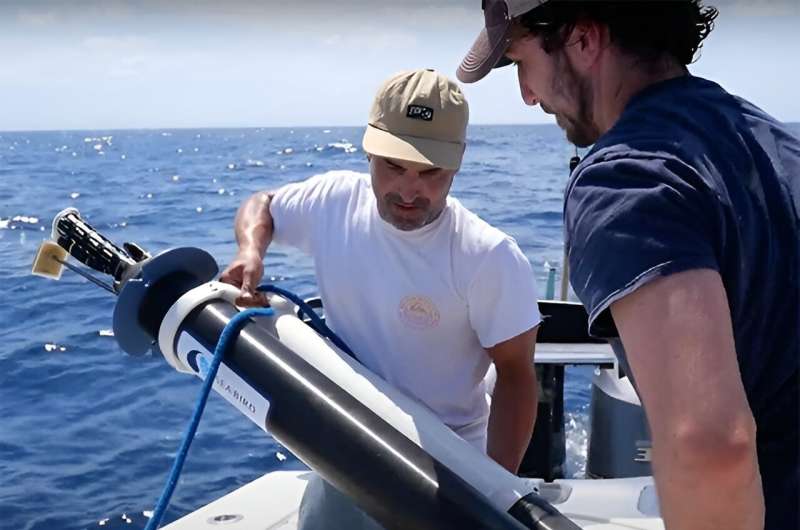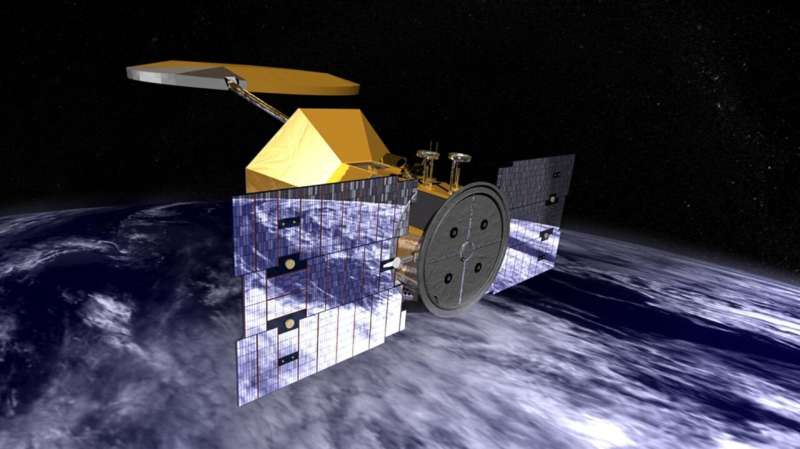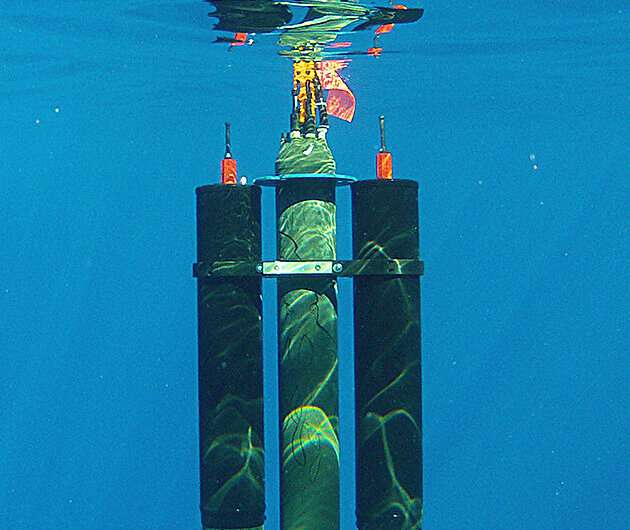
JUNE 4, 2024 by NASA
Collected at : https://techxplore.com/news/2024-06-energy-source-powers-subsea-robots.html
When it comes to mapping new territory, NASA’s record swamps Lewis and Clark’s. And the space agency doesn’t only chart other stars and planets—a vantage point from space also allows a great view of Earth. Now a recent NASA invention could allow robots to map our planet’s entire seafloor, helping to unlock valuable resources while protecting marine habitats. While the aquatic sonar devices for such an operation are not new, they’ve been severely hampered by batteries that leave them dead in the water.
Based on technology created at NASA’s Jet Propulsion Laboratory in Southern California and licensed from the California Institute of Technology, Seatrec Inc. of Vista, California, now offers the first energy source for subsea robots that is powered entirely by its environment, allowing devices to work in the open ocean indefinitely, without any intervention.
After earning his doctorate in ocean sciences, Yi Chao took a job at JPL to dedicate himself to ocean studies. His choice might seem counterintuitive, but the space agency has made the study of Earth—including its oceans and icecaps—a major priority, launching dozens of satellites with hundreds of sensors to measure sea levels, temperatures, salinity and much more.
“I spent the first 15 years or so at JPL studying the ocean from space,” said Chao, including a career highlight as project scientist for the Aquarius satellite mission that measured the salinity of ocean water. One challenge of the mission was to calibrate the satellite’s instrument against direct measurements of salt content from sensors that Chao and his team had to distribute across the oceans. While the satellite effortlessly whipped around Earth many times a day gathering readings, those oceanic distances remained stubbornly vast for researchers crossing them by boat.
“We went out to sea for 30 days,” he said. “We deployed—and we asked our colleagues in universities to deploy—all kind of robotic platforms to collect data in the middle of the Atlantic Ocean, not only near the surface but also below the surface, so we can calibrate and interpret what we’re measuring from space.”

The experience showed him how difficult it remains to access many of the world’s open oceans, which may lie more than a week from the nearest major ports, and it taught him about the robots that monitor conditions there. Their most limiting factor, he learned, is energy, especially for underwater sensors that can’t rely on the renewable energy that’s available at the surface from the sun, wind, and waves. All subsea robots are currently battery operated, and when the battery dies, the owner can either leave the sensor to become pollution or charge the battery on a ship. In the open ocean, that ship costs around $50,000 a day and burns tons of diesel fuel.
“I really had an opportunity to know the challenges of underwater robotics, and especially energy, and settled on this particular bottleneck that I want to address,” Chao said.
Robots rise up
He recruited two JPL colleagues, and they set out to build a different kind of power source for subsea robots.
To generate power, they settled on phase-change materials, substances that transition between phases—usually between solid and liquid—at certain desirable temperatures. NASA often uses phase-change materials to blunt temperature extremes in space, but Chao’s team wanted to generate power by taking advantage of the change in volume that accompanies a change in phase. Most substances, with the exceptions of water and metals, expand when they melt and contract when they freeze.

“We use the kinetic energy from that volume expansion to spin the motor and then turn the mechanical energy into electricity, and now you can recharge your battery,” Chao said. It’s an old concept and basically the way a steam engine works, using water’s expansion into steam to turn a motor. But the solid-to-liquid transition creates only about a 10% expansion. The challenge, therefore, is to make the most of the small amount of energy it generates.
“So every component has to be super-efficient,” Chao said. “That’s why people have tried this and didn’t think it’s enough energy to convert. We are the first to go through the process end to end and pick the highest-efficiency components, and eventually we can generate a sufficient amount of energy for an underwater robot.”

Leave a Reply